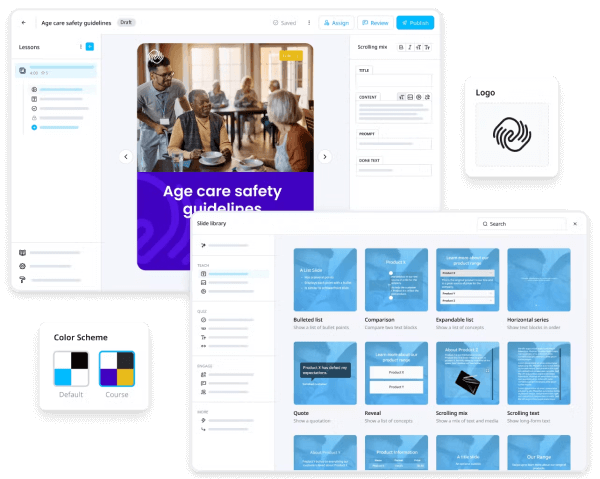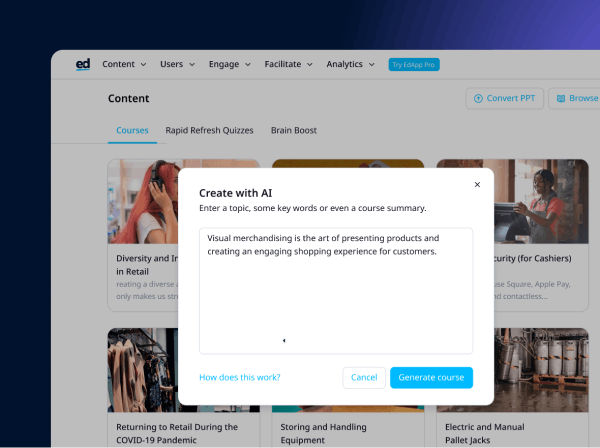Exploring the mobile workforce and how to manage them

As technology continues to advance, we’re seeing a trend where companies all over the world are already embracing the concept of remote work and establishing their mobile workforce. This shift has opened up opportunities for employees to work from anywhere that suits them best.
By being able to seamlessly fit work into their lives, this flexible work setup often translates into enhanced productivity and efficiency, all of which can significantly contribute to your business's success and bottom line.
This article will look deeper into the concept of the mobile workforce, exploring their benefits and challenges in the modern work landscape, and some tips on how to effectively manage them.
Defining the Mobile Workforce
The mobile workforce refers to employees who are given the unique opportunity to work remotely, from almost any location they prefer. They’re not restricted to work within the confines of their traditional office, meaning, they can perform their tasks from the comfort of their homes, coffee shops, or even while traveling. As long as they have either their laptops or smartphones coupled with a high-speed internet connection, this work arrangement is pretty much feasible.

This workforce is not limited to a particular industry or profession. It can be professionals from the sales, customer, or marketing sector, or sometimes, even from the IT field.
Train your mobile workforce with the best training tool - EdApp! Join us today and discover how easy it is to advance the skills of your mobile workers!
Advantages of a mobile workforce
Embracing a mobile workforce offers several advantages for both employers and employees.
Enhanced flexibility and work-life balance
Mobile workers have the freedom not only to choose where they work but, for the most part, to set their own schedules too. This allows them to balance both their personal and professional time. Various studies have actually shown that having this strong work-life balance serves as a good motivator for employees to carry out their tasks more effectively and efficiently.

Reduced stress and improved well-being
Working remotely eliminates the need to travel to and from the office. Employees no longer have to stress over their daily commutes, and instead, allocate their time and energy to focusing on their tasks. And as a bonus point, they can create a personalized workspace where they can perform at their best. Combining all these benefits can significantly boost not only their productivity but also their morale and overall well-being
Cost savings for employers
Having a competitive mobile workforce can also help reduce your company’s expenses related to office space and facilities. Even better, you can expand your hiring initiatives and hire employees from distant locations. With the added advantage of remote work, you don’t need to worry about overspending for their physical relocations, leading to potential cost savings in your recruitment and training.

Challenges of a mobile workforce
While remote work offers a number of great benefits, it also comes with its fair share of challenges that you should be aware of.
Communication and collaboration barriers
Effective communication is essential for a mobile workforce, and remote teams often rely heavily on digital communication tools. Miscommunication and misunderstandings can always arise, especially with the lack of face-to-face interaction. Having clear communication protocols and guidelines in place can be an effective way to overcome this mobile workforce challenge.

Work discipline and focus
Working from home or other remote locations usually comes with a lot of distractions, such as noisy pets, neighbors, and constant notifications from mobile phones. This requires mobile workers to put in extra effort to stay focused as they work on their tasks. As an employer, it’s important to equip your workforce with essential tips on how they can avoid distractions and practice self-discipline while working remotely.
Cybersecurity Concerns
Mobile workforce often uses their personal devices and home networks, which don’t have the same level of security as office setups. This raises the concern of various cyber attacks, like hacking your staff’s computer, stealing their data, and disrupting your services. To avoid these unfortunate events, you must implement robust cybersecurity measures and regularly train your mobile workforce on cybersecurity.

Effective mobile workforce management
Managing a mobile workforce isn’t an easy feat, especially since communicating with them is done mostly through virtual means. To achieve optimum productivity and guarantee smooth communication and collaboration with them, it’s crucial to adopt a thoughtful approach. Let’s delve into essential strategies to help you successfully manage your mobile workforce.
1. Equip them with the right tools and technology
Equipping your mobile workers with the right tools and technology will help them achieve a seamless remote work arrangement. Be sure to give them access to secure and reliable communication channels, such as messaging apps like Slack or Microsoft Teams, or video conferencing tools like Zoom and Google Meet.

Additionally, it would be wise to invest in cloud-based solutions like Google Workspace or Dropbox for easy data access and more secure knowledge management.
2. Offer training and development opportunities
Investing in continuous training and development will give your mobile workforce the skills and knowledge they need to excel in their role and successfully navigate the challenges of a remote work environment.

Since you’re running a training program for a mobile workforce, make sure to opt for mobile training solutions so that they’re accessible remotely. Take advantage of mobile-friendly learning platforms to roll out your training. Like EdApp, for example.
EdApp stands out as an exceptional platform for training the mobile workforce. One of its key features is its intuitive creator tool, which follows an easy drag-and-drop function. This allows you to easily build online courses for your mobile workforce, even without any coding or design experience.

This mobile workforce management software also takes pride in its AI create tool, which harnesses the power of artificial intelligence. This tool can automatically build fully-packed courses from just a single prompt, saving you an incredible amount of time and effort from creating training from scratch. If needed, you can edit these courses and add your own content and branding for a more personalized learning experience.

All EdApp courses support mobile learning. Meaning, they’re designed to be accessible through any remote devices, from laptops to smartphones. This fits perfectly with the work nature of your mobile workforce.
Level up the skills and knowledge of your mobile workforce with the best mobile workforce today!
3. Foster a culture of trust and empowerment
At the core of successful mobile workforce management lies trust. Delegate ownership of tasks and projects and allow them to work independently. Show confidence in your employees’ capabilities to perform their tasks. By giving them ownership of tasks and projects, you'll boost their morale, ultimately leading to improved work performance.

4. Set expectations and measure their performance objectively
Establishing clear expectations is important for managing a mobile workforce. Make sure that your company’s goals, objectives, and performance expectations are clearly communicated to your mobile workers. It would be helpful as well to define key performance indicators (KPIs) and outline specific deliverables and timelines so everyone’s on the same page.

It’s also equally crucial to be objective when evaluating your mobile workforce. Implement metrics that will effectively measure the quality of their performance. And most of all, focus on their outcomes and results rather than the number of hours they’ve worked. Encouraging such objective and results-based evaluation will effectively motivate your mobile workforce to perform at their best.
5. Promote team collaboration
Collaboration is a vital ingredient if you want your business to thrive. Although this is particularly tricky when managing a mobile workforce, there are different ways that can help your remote employees to seamlessly work together.

For one, you can schedule frequent virtual meetings where your team can brainstorm, solve a project issue, or simply catch up with their current tasks. Take advantage of online tools such as virtual whiteboards to make the most of these collaboration activities.
You can also invite your mobile workers for some virtual team-building activities or Zoom games to strengthen their bonds and interpersonal connections. Make sure to organize fun and interactive exercises that will show them the importance of teamwork and workplace trust.
Takeaway
The mobile workforce represents a significant shift in the way modern businesses operate, offering a range of benefits like enhanced flexibility, reduced employee stress, and higher cost savings for businesses. But, like any work setup, it also has challenges like communication and collaboration issues, staying focused, and cybersecurity concerns.
Managing a mobile workforce can be a bit tricky, but it can be made easier with the right tools and strategies in place. With a combination of clear communication, continuous training, and the right set of tools and technology, you can harness the full potential of your mobile workforce. And from there, achieve greater productivity and success in the modern work landscape.
Author
Jen Avelino
Jen is a learning expert at SC Training (formerly EdApp), a mobile-based training platform that helps corporates and businesses bring their training solutions to the next level. She carries an extensive writing experience in a variety of fields, including architecture, the gig economy, and computer software. Outside of work, she enjoys her free time watching her favorite series and documentaries, reading motivational books, and cross-stitching.
